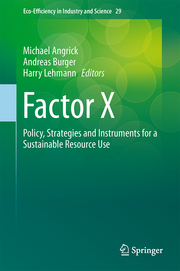Detailansicht
Factor X
Policy, Strategies and Instruments for a Sustainable Resource Use, Eco-Efficiency in Industry and Science 29
ISBN/EAN: 9789400757059
Umbreit-Nr.: 4005282
Sprache:
Englisch
Umfang: xviii, 311 S., 8 s/w Illustr., 53 farbige Illustr.
Format in cm:
Einband:
gebundenes Buch
Erschienen am 11.12.2013
Auflage: 1/2013
€ 106,99
(inklusive MwSt.)
Nachfragen
